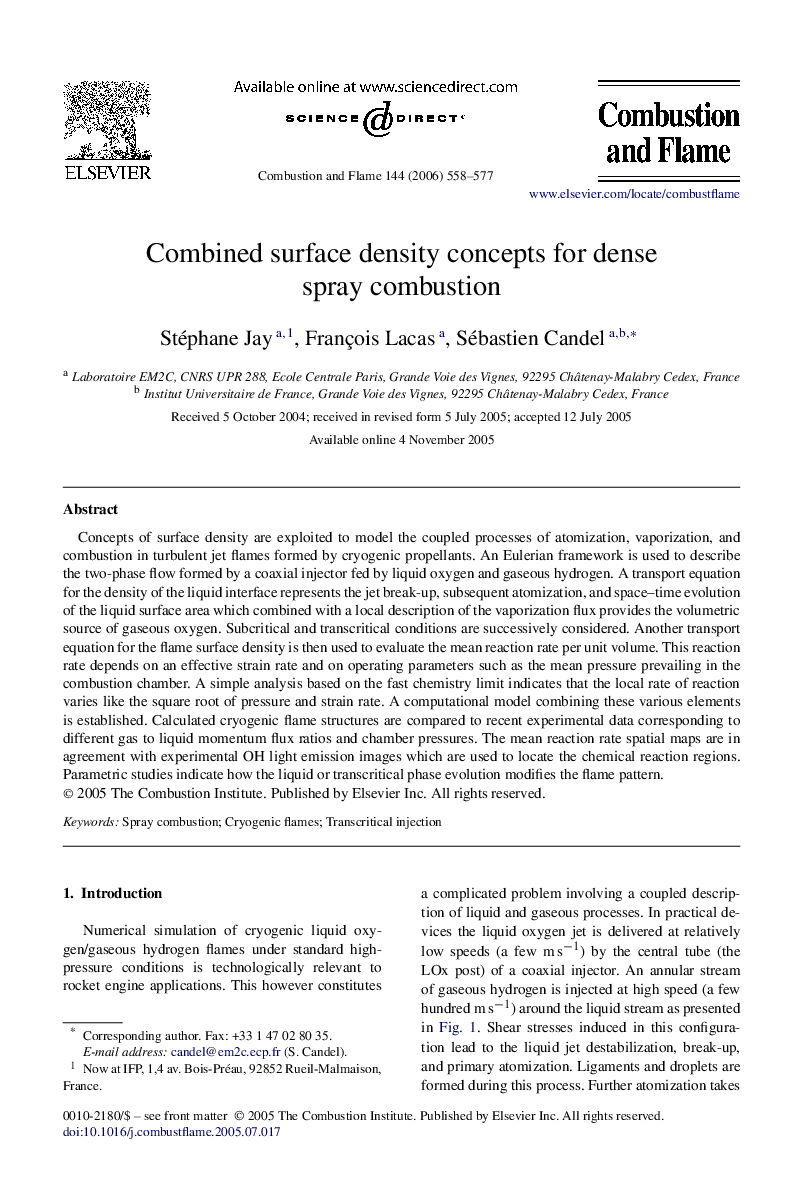| کد مقاله | کد نشریه | سال انتشار | مقاله انگلیسی | نسخه تمام متن |
|---|---|---|---|---|
| 167514 | 457866 | 2006 | 20 صفحه PDF | دانلود رایگان |

Concepts of surface density are exploited to model the coupled processes of atomization, vaporization, and combustion in turbulent jet flames formed by cryogenic propellants. An Eulerian framework is used to describe the two-phase flow formed by a coaxial injector fed by liquid oxygen and gaseous hydrogen. A transport equation for the density of the liquid interface represents the jet break-up, subsequent atomization, and space–time evolution of the liquid surface area which combined with a local description of the vaporization flux provides the volumetric source of gaseous oxygen. Subcritical and transcritical conditions are successively considered. Another transport equation for the flame surface density is then used to evaluate the mean reaction rate per unit volume. This reaction rate depends on an effective strain rate and on operating parameters such as the mean pressure prevailing in the combustion chamber. A simple analysis based on the fast chemistry limit indicates that the local rate of reaction varies like the square root of pressure and strain rate. A computational model combining these various elements is established. Calculated cryogenic flame structures are compared to recent experimental data corresponding to different gas to liquid momentum flux ratios and chamber pressures. The mean reaction rate spatial maps are in agreement with experimental OH light emission images which are used to locate the chemical reaction regions. Parametric studies indicate how the liquid or transcritical phase evolution modifies the flame pattern.
Journal: Combustion and Flame - Volume 144, Issue 3, February 2006, Pages 558–577